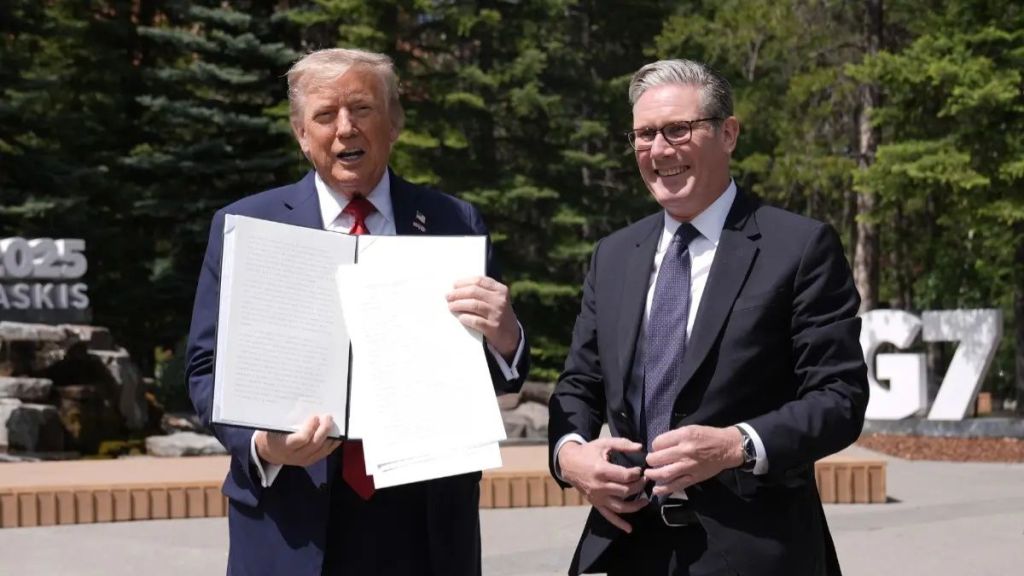Despite the United States and the United Kingdom making significant progress on a trade agreement, announcing key tariff reductions in automotive and aerospace sectors, tariffs on UK steel and aluminum imports remain a major unresolved issue.
On the sidelines of the G7 Summit in Canada, US President Donald Trump and British Prime Minister Keir Starmer hailed the partial deal as a “very good day” for bilateral ties. The agreement reaffirmed lower tariffs and quotas on British automobiles and eliminated duties on the UK aerospace sector. However, the thorny issue of steel and aluminum tariffs was notably left unresolved.
At the heart of the impasse lies Washington’s continued scrutiny over the security of the UK’s steel supply chain. One sticking point is the foreign ownership of key UK steel producers, specifically, British Steel’s Chinese ownership. US officials worry about potential influence from Beijing, especially given the broader context of US – China strategic competition. These concerns have led to discussions around audits and national security reviews, further complicating the path to tariff relief.
Adding to the challenge is the fallout from Brexit. When the UK was part of the EU, it benefited from exemptions and preferential terms under EU-U.S. trade agreements. Post-Brexit, the UK must now negotiate independently, and those prior exemptions no longer apply. This has led to higher tariffs—up to 50% earlier this month—that Britain narrowly avoided through temporary arrangements, which could lapse if a comprehensive deal is not finalised by July 9.
The United States has proposed a quota system that would exempt a certain amount of UK steel and aluminum from the 25% tariffs imposed under Section 232. However, this exemption is contingent upon the UK demonstrating tighter security standards in its steel production and supply chains, a requirement that continues to delay final implementation.
The political context has also played a role. The US has expressed concerns over the UK’s handling of the Northern Ireland Protocol, viewing it as a broader litmus test of the UK’s alignment with Western interests and stability in the post-Brexit era. These geopolitical factors have influenced the Biden administration’s cautious approach toward finalising steel tariff reductions.
While the aerospace and auto industries have celebrated early wins, including tariff-free access for UK aircraft parts and a 10% tariff quota on 100,000 British cars annually, the steel industry remains in limbo. UK officials say they are pushing for “significantly preferential outcomes” for sectors like steel and pharmaceuticals, but acknowledge the work ahead.
UK Trade Secretary Jonathan Reynolds has emphasised that trade implementation is typically slow, but insisted progress is being made at pace. Still, the steel sector must wait.
When asked if the UK is protected from future tariff threats, Trump responded, “The UK is very well protected. You know why? Because I like them. That’s their ultimate protection.” For now, the question of steel tariffs remains a key test for both countries in translating goodwill into durable policy.

